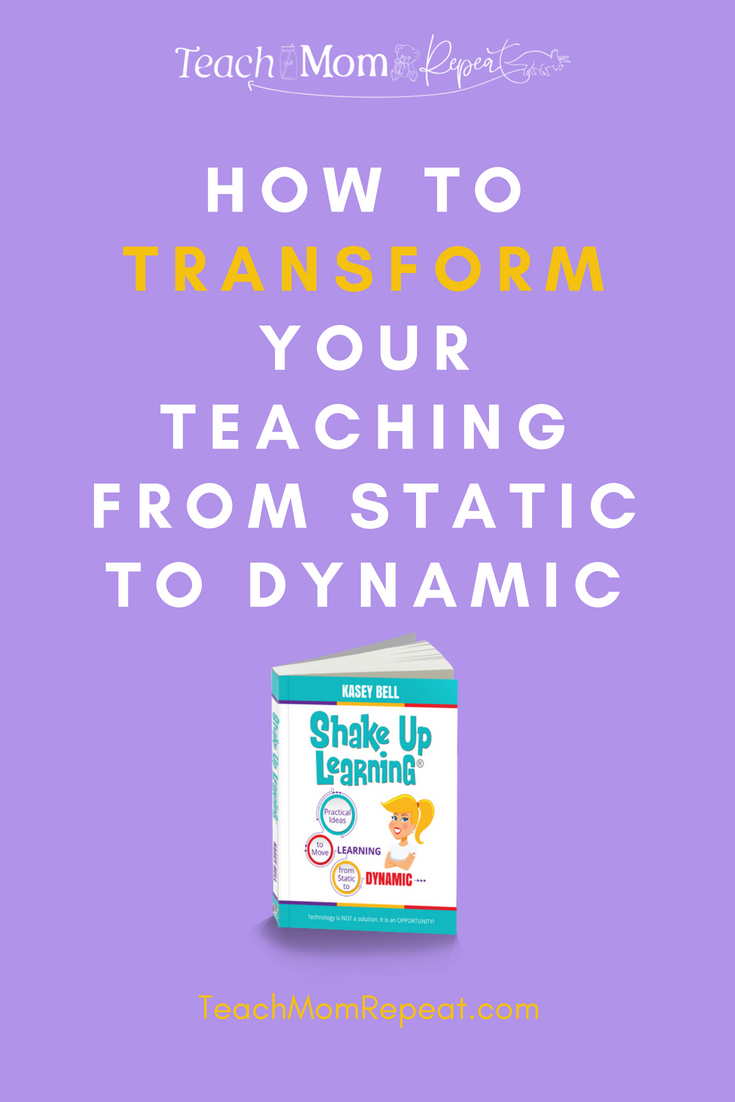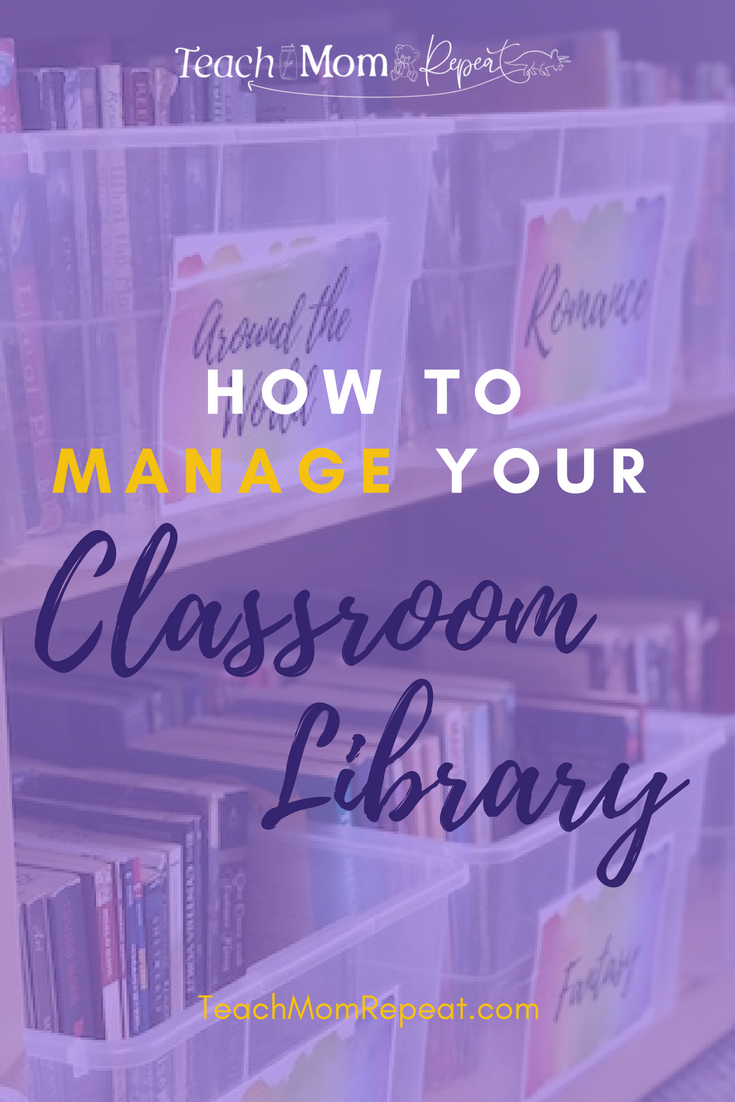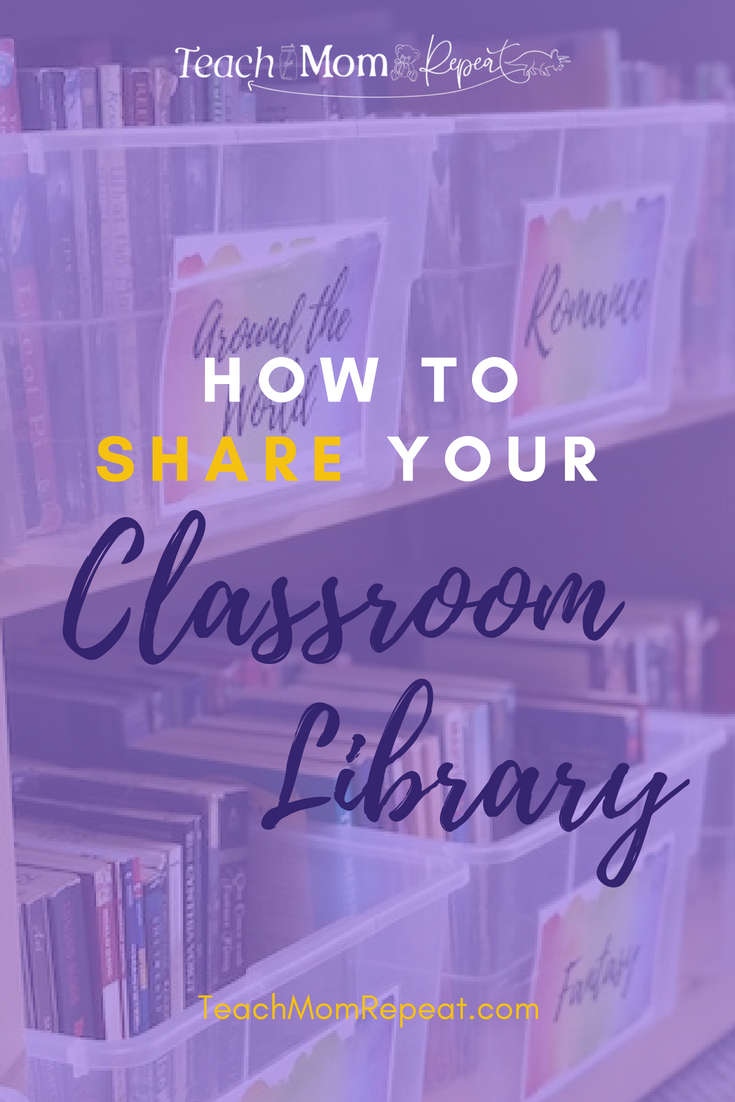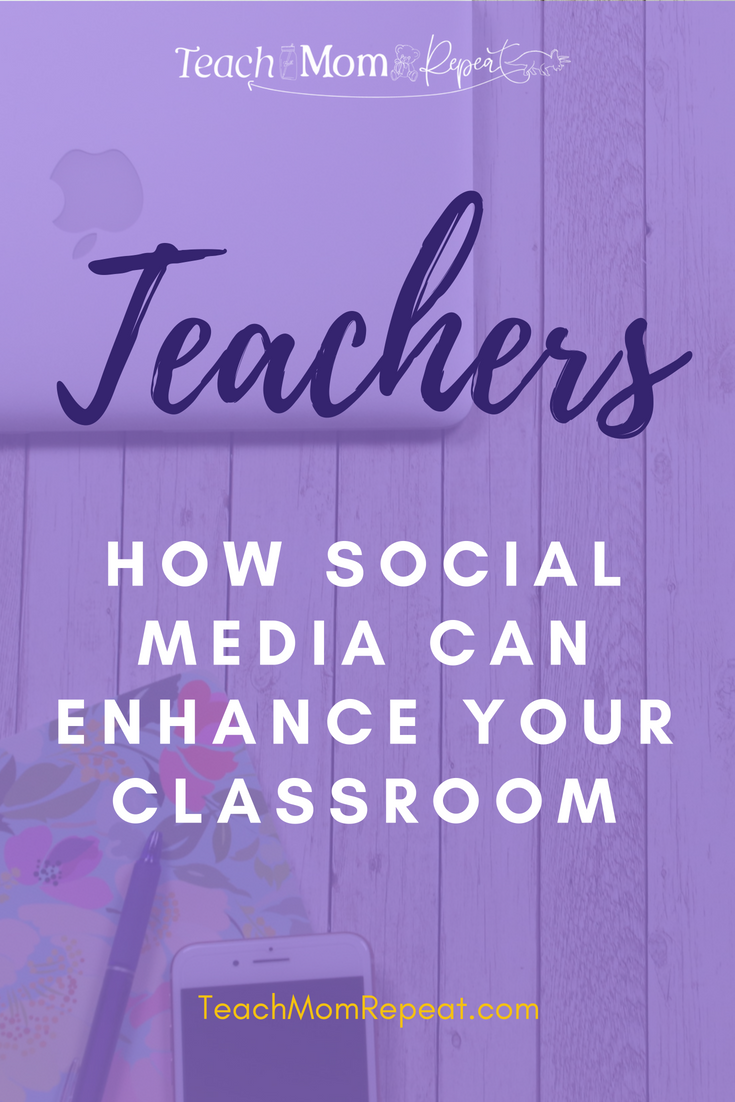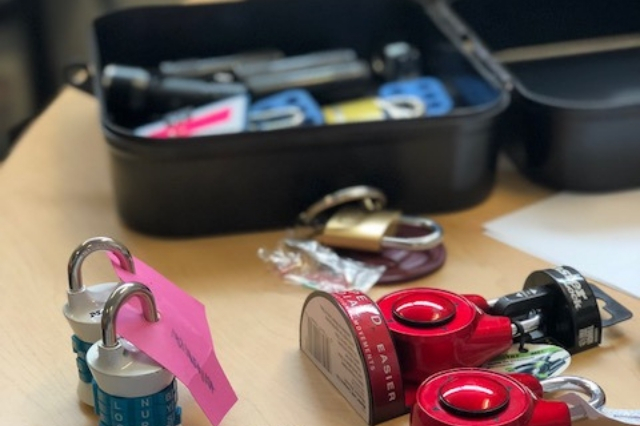
by Carly Black | Apr 20, 2018 | Classroom Solutions, Lesson Plans, Teacher Solutions, Teaching Methods
When it’s test-taking season and the kids have worked so hard, they need a day to use that knowledge for fun! Rather than more practice with multiple choice questions, try a BreakoutEDU session.
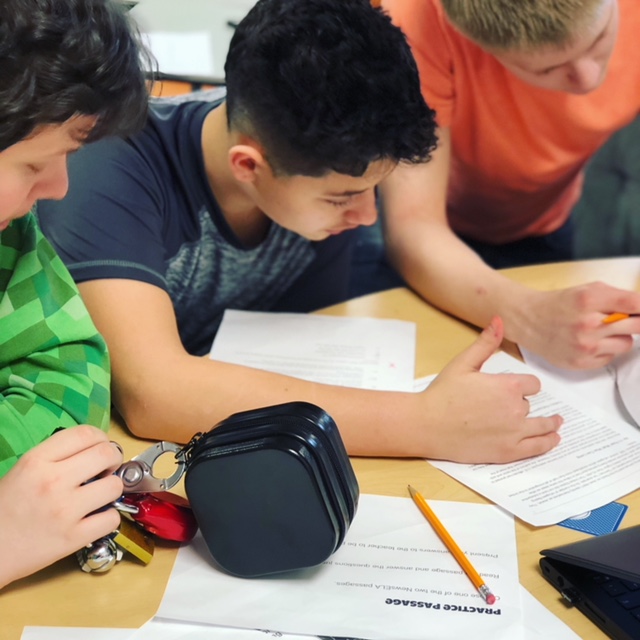
What is a BreakoutEDU?
The best way to describe it is to compare it to an Escape Room activity. In a similar fashion, students are working to determine the code that will help them unlock the box. Creativity is the name of this game! The purchased kits come with a box, multiple kinds of locks, a hasp (for adding multiple locks to one box), Hint cards, a deck of reflection cards, invisible ink pen, UV flashlight, red lens viewer, and a blank USB. With all of those options, there are a bazillion ways to create tasks for students to discover a code to unlock a lock. For the ELA teachers, this would go great in a mystery unit, for Science teachers may be a forensic unit. Honestly, there are endless possibilities here.

How did I do this?
After posting a series of photos and videos to Instagram, a number of teachers contacted me about how to do this. My first suggestion is to take a look at their website. If you’re completely new to this idea their website is the place to start. Fortunately for me, our librarian had all the tools and knowledge I needed to get started. She was able to provide me with the tools and some ideas for creating the session.
If you are choosing to create your own, start with the material. Decide what knowledge the students will need to know in order to complete a task. This works best for the end of unit review or test preparation. I had shared a test prep slideshow at the start of the week, which you can find in my Teachers Pay Teachers store bundled with a Jeopardy game.
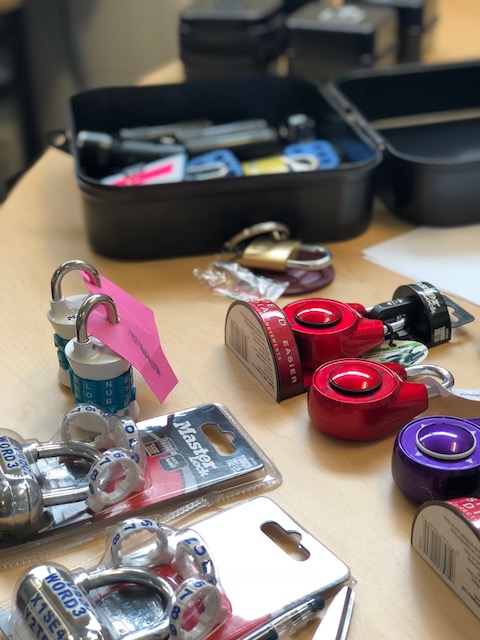
Next, you will need to create the tasks associated with each lock. I chose to make this pretty challenging, so I had 6 total locks on each box. This is where you can get creative! Choose if you’d prefer tasks to open locks or have them moving around the room to find clues that will lead to opening a lock. If trying to figure this all out sounds daunting, it did to me at first, be sure to check out the website for complete session ideas. To organize myself, I laid out each lock and gave it a sheet of paper. We used 2 key locks, a 3 digit number lock, a 4 digit number lock, a 4 letter word lock, and a directional lock. I started with the number locks. Looking at my materials there were a few questions I could ask that created a number series. You can also use ciphers to translate letters into numbers. The key locks were made from the most complex material. I asked students to complete a task that needed to be checked by a teacher and if correct they were awarded the key. To add a little more fun to this you could also include a riddle that would lead them to a hidden key. The letter lock can be used as a four letter word answer or you can use multiple choice questions. Tackling the directional locks took some thinking, thankfully my co-teacher came up with a great idea.
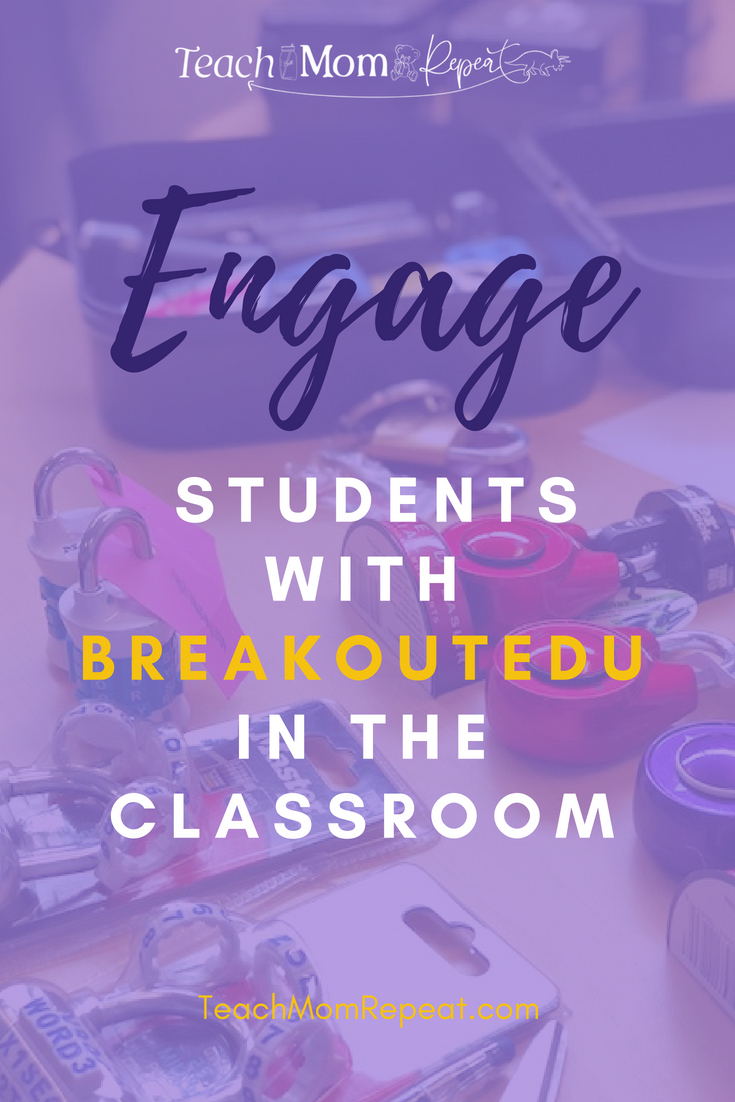
In order to make the directional locks work we had to create a series of directions by color coding answers. On the board, I had the directions written in the color that answers were highlighted with on a slide show. Students matched the right answer to the color and direction to create the correct series. For example, if the correct answer was highlighted with blue then students had to match that to the blue word UP that I had written on the board. I didn’t tell students what the words were for, they discovered this on their own. This is part of the critical thinking that students will need to use. Ask them to pay attention to their surroundings for finding answers.
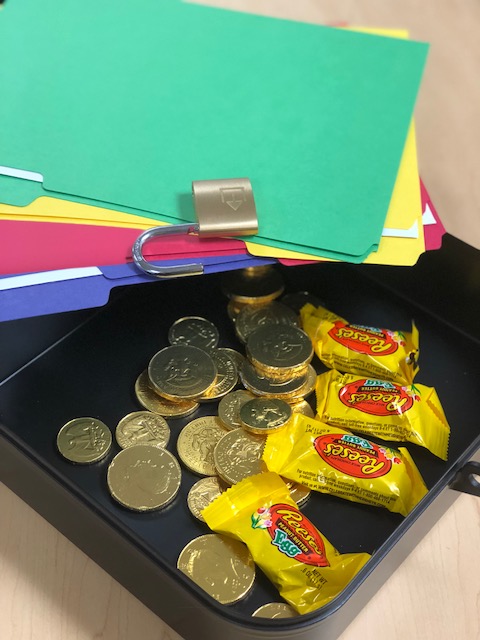
Once they had all the locks opened the small box held a riddle that leads them to a key hidden behind one of my anchor charts. I did this so that there would be only one group to win the treasure chest of candy. My classes this year are very competitive, so it worked to my advantage to make only one winning group. Each of the small boxes could easily contain a “prize.”
Can I make my own?
Now, you may have already visited the website and noticed the price of one kit ($150). Most teachers don’t have the money to spend on one kit so let me suggest a few ideas for making this happen. First, you could always ask the team or grade level to split the cost. In our district, we are given a supply fund, but I know this is not the case for all districts. Our librarian used her book fair funds to purchase a school kit for our building to use. Then a second kit was purchased through Title I funding that we receive. If none of these are options for you, consider writing a grant. The uses of a kit such as this are endless and adaptable for any grade or subject. If you still aren’t able to purchase a name brand kit, I’m certain you could find locks and a box at any dollar store. The quality may not be that great, which makes the possibility of cheating greater. Start with a discussion on integrity and it should work well.
Whether you purchase a name brand BreakoutEDU kit or choose to create your own, you won’t regret bringing this fun activity into your classroom. Comment below and let us know how your Breakout session goes!
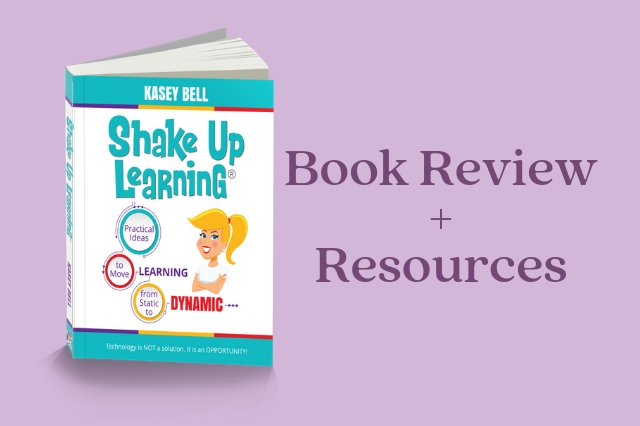
by Carly Black | Apr 11, 2018 | Classroom Solutions, Teacher Solutions, Teaching Methods
Starting this blog has been the best professional development in my 15 years of teaching. Learning about the teacher community of social media that supports and encourages one another has been an incredible inspiration alone. I’ve also discovered other blogging teachers who share fantastic ideas and resources. The most important professional development has come from making professional connections to teachers around the world. One of those teachers is Kasey Bell from Shake Up Learning.
Some of the links found in this post are affiliates. This means if you make a purchase after clicking through we will receive a small compensation at no extra cost to you. Thank you in advance for your support and please know that we only endorse products we use and love.
After attending my first EdCamp, the information I learned from Kasey’s blog was invaluable to my classroom. You see I didn’t have the time to drive half an hour on specific days to attend training in order to learn how to better use Google Classroom with my students. Instead, I read every blog post and resource Kasey had posted on the topic and taught myself in the convenience of my own home, and usually in my jammies. There was so much she had to teach me, so when her email swooshed into my inbox asking for book reviewers I immediately responded. Reading the book, Shake Up Learning, opened my eyes to a number of new ideas, but also validated so much of how I already teach.
Change is inevitable
“Learning has changed, and it will continue to change. Before we can tackle all the technological changes in our classrooms, we must first take a step back and redefine what learning is and what it looks like in the twenty-first century.”
YES! Change is inevitable. We can either let it break us or we can learn to find ways to turn it into an advantage. We’ve all probably heard much of this before and been made to feel like we have to change the way we do things in our classroom tomorrow. However, this is not Kasey’s approach to adapting lessons in our classrooms. At the end of each chapter, Kasey very clearly lays out action steps. This provides teachers a plan of attack for accomplishing the transformation to our lessons that students need. I remember attending a technology conference in the first few years of teaching and the lead speaker said that 80% of our students are in school training for a job that doesn’t exist yet. Now I have no idea if that percentage is currently accurate, but I can’t imagine in a decade this has decreased. Either way, this idea has stuck with me and encouraged me to create the kind of lessons Kasey describes in her book.
The second part of this book goes into detail about the attributes of a dynamic lesson. Kasey begins by stating, “…it’s going to be uncomfortable.” Teachers are possessive creatures. We take pride in our classrooms, we attach ourselves to students and it takes a lot of blood sweat and tears to pull off a successful unit. So when someone tells us we need to make changes it can sometimes sting. Teachers are also passionate about learning, whether it’s their own or their students’. This is why we should be willing to learn new ways of bringing content to our classrooms.
A dynamic learning experience is about empowering students to take a lead in their own learning. It’s like I’m always telling my writers, show them don’t tell them.
The last part of this book walks you through the steps it takes to produce a truly dynamic learning experience for your students. Starting with the planning process and even sharing a few sample units. In the online resources available there is a template to help as well. With all of the online resources for each chapter and Kasey’s self-paced workshop, I’m looking forward to some curriculum planning this summer.
The book, Shake Up Learning, was just the beginning of what Kasey has created for helping teachers turn those static lesson plans into dynamic learning for their students. She now hosts a Shake Up Learning podcast that drops new episodes every Tuesday. Have a listen to my favorite episode, the one where Kasey coaches me through a lesson that was a struggle for me. I enjoyed the collaboration and push she gave me in order to transform this idea.
Another free opportunity Kasey offers is the online book study. She hosts a self-paced and community collaborative book study in her Facebook group. Grab a copy of the book and join the next book study that begins February 13, 2020.
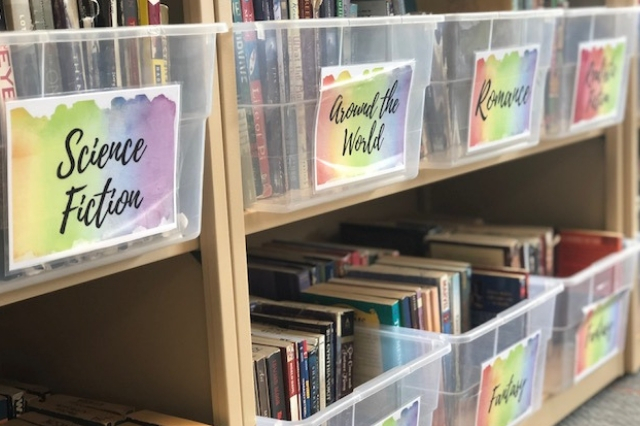
by Carly Black | Mar 6, 2018 | Classroom Solutions, Library, Teacher Solutions
An eighth-grade teacher’s classroom library is where I found my favorite book, Goodbye Paperdoll. She had a closet-sized classroom, but still felt it was important enough to sacrifice the space for bookshelves that lined the back wall. If you, too, are a language arts teacher with a major book obsession as embodied in your own classroom library, you’ll want to check out this amazing resource I found and have been using since 2011.

Getting started
Booksource.com launched Classroom Organizer as a free online classroom library checkout and return system for teachers, and it has made all the difference in my classroom. When I started teaching in 2001 I had collected a small library and kept track through index cards. Each month I would add books through Scholastic book orders and bonus points, but I was terrible about using the index card system. There was too much I needed to do for the system to be effective, and by effective I mean keeping track of books that traveled to and from my classroom. One summer I thought I’d trade up to a spreadsheet that students could enter book information for themselves, but that quickly became a true nightmare. Then one afternoon I was scrolling through iTunes, searching for new teacher apps and the heavens parted when I saw a free app called Classroom Organizer.
This FREE resource has revolutionized my classroom library! At the time I had a student helper, so I created an account and put her straight to work scanning in my 1200 plus classroom library. Back then there wasn’t much to the system beyond the title, author, ISBN, and book cover photo. Now, Booksource offers you a number of options to really get the best out of your library. If you’re ready to transform your classroom library then check out these features and tips for using the Classroom Organizer. Want a FREE editable poster to show students how to use your new online book checkout system? Sign up for the TMR newsletter!
Making it work for your classroom library
First, you’ll need to create an account. When creating your account keep in mind that students will be using the username and password to access the student page. Capitalization counts here! Originally I was not married when I created my account, MissBBooks, and it was not a difficult task to have my username changed, however, I did have to contact the website to make the change. Changing the password can be done on your own. I always make my password the room number. This makes it easier for students.
Once you have an account, the website will walk you through the features of your dashboard to give you a full picture of what the site offers. Before you start adding books, be sure to visit the Preferences page found on the Your Account page. Here you will be able to list any genres you want to include. In order for these to be part of the drop-down menu in your library check the Genre box under Library Data, but be sure the Fiction/Nonfiction box is not also checked. I suggest looking through all of the details that you can provide with each book, like the genre, location, condition, lexile, etc. and decide what labels you feel will truly benefit your classroom. I have never kept up with the conditions, but I would like students to know the lexile of a book and where it belongs in my classroom. The problem here is that these are updates for me, so in order to add them I would have to input this for each individual book; with more than 3,000 books being housed in my classroom that’s a ton of time updating. It’s my advice to make these decisions before you begin! As you input books you can add these options from the website. Books are organized alphabetically by title, so once you get a number of your books into the system you’ll want to search the title to make those additions.
When you’re ready to add titles I would suggest using a laptop and scanner, if you have access to one. This is a quicker method when the book doesn’t have an ISBN number or fails to pick up information, like the author or book cover. Using a device with a camera is an option, but it will not show you the detail that the website provides.
Once you have scanned in your library there are a number of reports to help you make new book decisions. For example, you can see what genres you have very little of and start adding more. You can even create a wish list of books to share with parents! Need help finding titles? Read my post on 50+ Summer Reading Recommendations, they aren’t just for summer.
One of the other great new features is Teacher Resources. Booksource has provided lesson ideas for thousands of titles and gives you FREE access to them. You’ll notice a small TR maroon circle in your library view.
Using this system has made it so much easier for me to keep track of books, see what kids are reading, and find new teaching ideas. Some of my voracious readers even added the app to their phones to make check out faster! Let me know how the Classroom Organizer works for your classroom. Don’t forget to subscribe to our exclusive teacher newsletters for a FREE poster to help students with the login and check out process, among other great free printables.

by Carly Black | Dec 28, 2017 | Classroom Solutions, Organization
How many of you had a new planner or personal calendar on your Christmas list? None. Me either, because for teachers the year began in August, and will end in June. Our resolutions and goals, those were set back in the fall when school was just about to start. For teachers, this time of year is not about setting new goals but evaluating the ones we set for our current school year. This is the approach I’ll be taking with my students when we return to the classroom on January 2.
Middle schoolers have a hard time seeing a full year into their futures and let’s be honest, twelve months is a long time. Young teenagers don’t want to think that far into their futures, because a lot can change for them in that amount of time. I’ve already had two students this school year leave my class because their parents decided they wanted to be living in a different state. My guess is that those students didn’t have much say in that decision. This is why I feel resolutions are not practical for middle schoolers or this teacher. From January to June 2018 they will be in middle school, but once the summer hits they take on the new title of Freshman. A very different distinction.
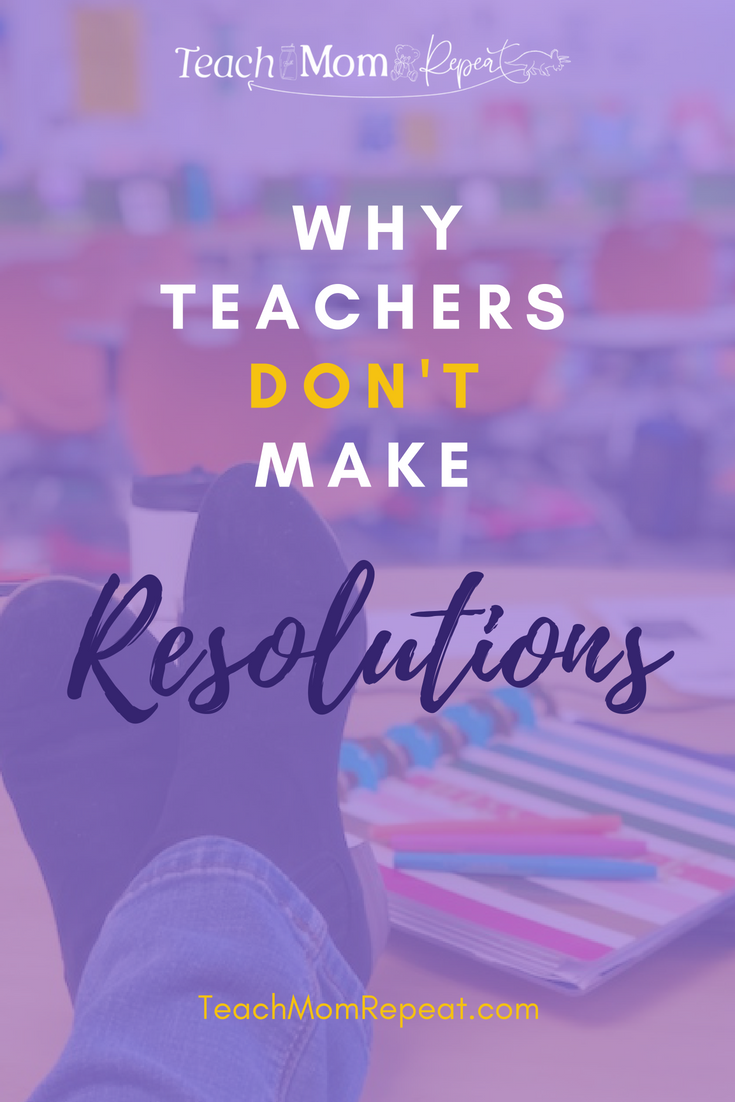
Consider my year, at the start of 2017 I was trying to figure out exactly how I could handle another 6 months nursing my daughter because pumping at school was taking a serious toll on my schedule and sanity. Today, my daughter is a fantastic eater so maybe I can chalk this year up to a success. Either way, the start of my year looks a whole lot different than the end, and that can be difficult to plan for, especially when there are two separate school years on the bookends. I like to think of January as a time to evaluate my teaching thus far and consider how we cross that school year finish line maintaining the pace. My students are keeping track of their major data pieces: AIR test, SRI tests, and CFA quarterly tests. With each score, they are writing a reachable goal for the next opportunity. They also made general reading and writing goals that could be short or long-term. We will have to start talking about what their high school schedule might look like based on how they are meeting goals. Side note, a number of my advanced students will need to seriously consider staying on the advanced track in high school; it’s been a rough first half with turning in quality writing and keeping up with reading assignments. Which is why I prefer to use this time of year as a lesson in evaluation rather than resolution. The goals have been set, now is the time to measure achievements and amend any goals to round out the school year.
I plan to ask my students to answer 3 important questions:
- What goals have you reached now that we are at the halfway mark?
- What new goals do need to set to finish the school year strong?
- What goals do you need to change or create in order to reflect the high school career you envision for yourself?
Their answers will help me have important conversations about making the middle school to high school transition. I’m new to this conversation, so any other 8th grade teachers out there with advice for helping students through this transition be sure to leave a comment.

by Carly Black | Aug 10, 2017 | Classroom Solutions, Lesson Plans, Library, Teacher Solutions
This summer my classroom library got a makeover. Mostly because it gained another 1,000 books! I’ve taken over the classroom of a retired teacher who left her beloved library behind for my students to continue to enjoy. I’m beyond grateful for this kind of gifting, and I’m having a fabulous time getting to know some of the new books. I can’t wait to introduce them all to my students.

Some of the links found in this post are affiliates. This means if you make a purchase after clicking through we will receive a small compensation at no extra cost to you. Thank you in advance for your support and please know that we only endorse products we use and love.
3 Engaging Ideas to Share Your Classroom Library
Let me share a few ways I’ve discovered to help share all the different books living in my classroom library.
Show and Tell Book Style:
This is exactly what it sounds like, ask students to find a book in your library that they have read and enjoyed. Give students a few minutes to think about or write what they remember liking about the book and two highlights from the story. Students can then share them with the whole class or in small groups for a less intimidating audience.
Sail the Stacks:
This activity takes a little set up and works well when desks are in small groups. Start by creating stacks of 8-12 books of the same genre. Choose books that tend to be popular within the genre and are great representations of the genre. You could add genre labels to each table, or simply place a sticky note on the stack. Write on the board or announce, “If you were shipwrecked on an island and found a crate of books that contained only one genre of books what genre would you want it to be?” Have them “visit” that island and allow them a few minutes to talk about the stack. Add a “rowboat” and allow them to travel to a different island.
Speed Booking:
It’s similar to the concept of Speed dating. I always like to share this funny eHarmony commercial to introduce the activity. This activity also takes some set up. I have tried this with several different desk formations, but a circle works best.
We start by talking about the things that “attract” us to books. That leads to a discussion about how we make the decision to read the book. We write the list of options on the board. The list usually includes ideas like the cover (kids almost always say this first), favorite authors, reading the back to see if it spikes interest, reading a page in the book and a number of others.
You’ll want to have pre-stacked books on student desks in no particular order. I like to choose books that get a lot of traffic throughout the year, books that I’ve purchased over the summer, or books that I think often get overlooked. Obviously, I can’t show them all my books, but this is a great way for them to get a cross-section of what’s available. So be sure to provide all the different genres represented in your library, as well as reading levels.
Students are then given a sheet to record any titles they find interesting. This sheet is kept in their binder so when they finish a book they have a place to go for ideas about what to read next. The idea for keeping a Future Reading List came from Donnalynn Miller‘s books, The Book Whisperer and Reading in the Wild. Whenever a student is taking their good ‘ol time searching for a new book I like to direct them to their list to speed up the process.
If this sounds like something you’d like to do in your classroom find all of the directions and forms to print in my Teachers Pay Teachers store. I’ve updated this product to include a record sheet for the more visual learners in the form of an Instagram feed. Students can draw or copy the book cover into the square and then caption why they think it’s interesting. This keeps students occupied when there aren’t interesting books in the stack for them.
Do you have a great idea for sharing books with your students? Share them in the comments below.

by Carly Black | Jul 8, 2017 | Classroom Solutions, Community, Teacher Solutions
This morning I had an Aha moment that soon reached #mindblown status. Here’s how this happened: Instagram has become a game changer for my teaching career. Now nothing I’m about to share is going to be new information to anyone; well maybe it depends on how in the dark you are, I was in the dusk. However, just like many of us teach our students, it’s not what you know it’s about how you use that knowledge. For example, I know I shouldn’t eat so much sugar, but does that stop me from pouring flavored creamer into my coffee every morning: NO. So you get what I mean, keep following me.

A Social Media Revelation
In the middle of the night it occurred to me, (my one-year-old daughter isn’t sleeping through the night, but that’s another mom post) there is a reason my new found use of Instagram hit #mindblown status whereas many of you will be like, yeah duh! Our building has not had a new teacher straight out of college in over a decade.
Why does this matter? Take a moment to flashback into my classroom during what I thought was an engaging lesson. I presented a writing lesson on character development that asked students to create a Facebook profile for their character. I thought I was being “trendy” and the kids would love bringing social media into the classroom. Do you know what they all told me? “Facebook is for old people. I don’t even have Facebook.” In fact, Facebook is old enough that as I’m writing this post it doesn’t tell me to check it’s spelling, but it does for Instagram.
What does this teach us? Besides the fact that I can now place myself in that veteran teacher category, it means I’m not as “trendy” with my teaching lessons as I thought. All of the people who teach alongside me are just as veteran as I am now. We haven’t had a new teacher, out of college new, join us to share what the kids are doing these days.
Let me bring you into the light
We all know about Pinterest, which is a search engine and that makes a difference. Many of us probably have a love/hate relationship with this site because let’s be honest, it can make you feel inadequate if you’re not seeing those amazing photos for the inspiration they are meant to be. Now because it’s a search engine you may, as I did, have missed something important because you weren’t searching for the right term.
To make a long story short, to “close our gaps” the staff in my building is being told to use learning progressions when creating formative assessments in order to collect the right data to inform our instruction. That probably makes sense to a lot of you, except the learning progressions part because I learned yesterday that’s not the right term. Or at least no one else on the Internet is calling it that. It was evident when I’d been searching Google and no one else seemed to be using this idea. Which was so bizarre to me because nothing ever feels new in the world of education. Then it occurred to me maybe we were on the cutting edge. Nope. We needed to be turned in a different direction. We needed to be looking at Marzano’s learning scale. So here I was trying to create the wheel that had already been invented. In the teaching world, this is usually the case. Your teaching solution is out there you just have to search for it! But you can’t find it if you’re searching for the wrong thing.
Enter social media.
Pick a hashtag, I suggest #teachersfollowteachers, to start with and now you will see what it is you need to be searching for. Rather than looking for the information, the information will now start to fall in your lap. See what other teachers are doing, find the ones who are also blogging about it (#teacherswhoblog, #teacherblogger) and then join their email list for updates so you don’t miss anything good. Join mine and you’ll be given access to a growing library of FREEBIES!
There is a whole network of teachers inspiring, supporting and encouraging one another on social media that you may not know exists. I’ll admit as part of that new micro-generation, according to a recent Facebook article, social media is not something I thought could really benefit me in any way. I thought it was about sharing pictures, when really it’s about sharing ideas, and aren’t ideas so much more powerful than pictures?
Join this new (to me) #teachertribe! A fellow blogging middle school teacher, @t_isforteaching tagged me in her Instagram follow suggestions and I have to admit it felt like being invited to the “cool” kids’ lunch table. Education is evolving, we can evolve with it or we can choose to get left in its dust. What are you choosing to do? How does social media help you be a better teacher?









